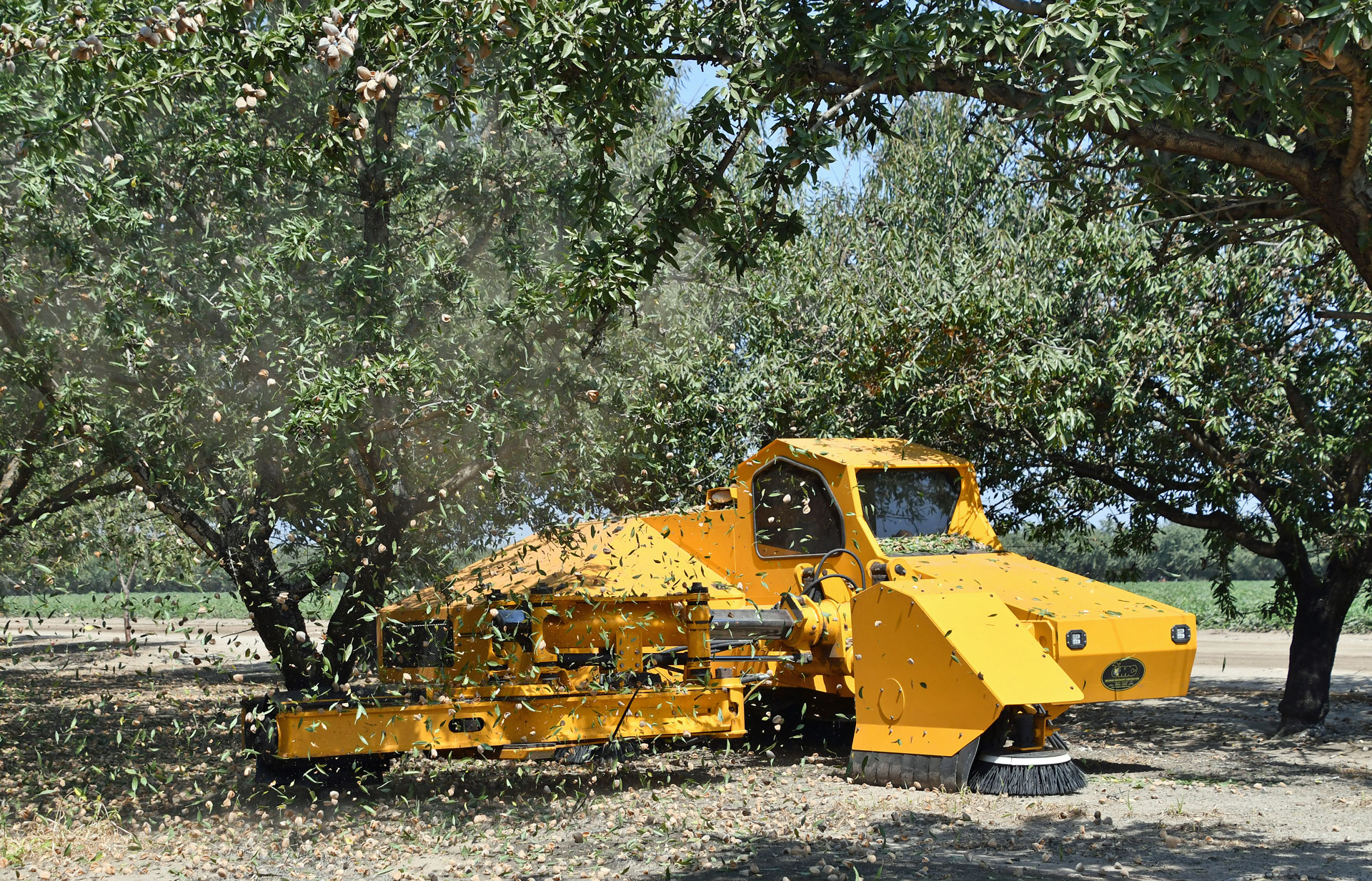
While the amount of Nonpareil almond rejects due to navel orangeworm (NOW) damage varies from season to season, Blue Diamond Growers has noted a concerning uptick over the past 10-plus years. With the upward trend comes opportunity losses from reduced or no grower premiums.
UCCE farm advisors and Blue Diamond staff point to not one, but a combination of factors that likely are responsible for the increasing rejects.
“It’s hard to say exactly what’s going on,” said Jhalendra Rijal, UCCE IPM advisor for Stanislaus, San Joaquin and Merced counties. “It could be multiple factors at play.”
Among potential contributors are drought conditions, larger nut crop acreage that provides increased continuous hosts, the availability and cost of polling crews for winter sanitation and pesticide resistance.
As a result, Extension and industry representatives recommend growers double down on their IPM practices, which start with foundational winter sanitation. Proper timing of the other IPM practices is also crucial, whether it is hanging monitoring traps in the spring, putting out mating disruption dispensers, applying hull split sprays or harvesting.
Rejects Up in 2021
So far this season, Nonpareil overall reject levels are running about 1.75%, second only to the “train wreck” of 2017 and 2018, said Mel Machado, Blue Diamond vice president of member relations.
In the past, about 80% of the rejects could be attributed to NOW damage. But that’s not the case anymore. While NOW still comprises the bulk of the rejects at 53%, he said other problems, such as brown hole, are on the rise.
“NOW is still the primary problem out there, but primary is a relative term,” Machado said. Rather than looking at average reject levels, he said he prefers to look at how much of the crop goes into the co-op’s quality programs.
Based on the amount of the Blue Diamond crop run as of late October, about one-third failed to make grade and was considered standard. Broken down, the northern production area was running 38%, the central 25.7% and the south 44%.
“That’s stunning, 44%,” Machado said. “Even in 2017, it was 37%.”
When Machado compared the crop going for meats to that destined for in-shell, the differences were glaring.
Only 12% of in-shell failed to make grade. He attributed it to varieties that have tighter seals, making them less susceptible to NOW. Growers also are more aware of reject levels for the in-shell market and manage accordingly.
The Foundation: Winter Sanitation
At the heart of NOW management is winter sanitation, which not only removes mummies in which larvae overwinter but also eliminates egg laying sites for the first NOW flight in the spring.
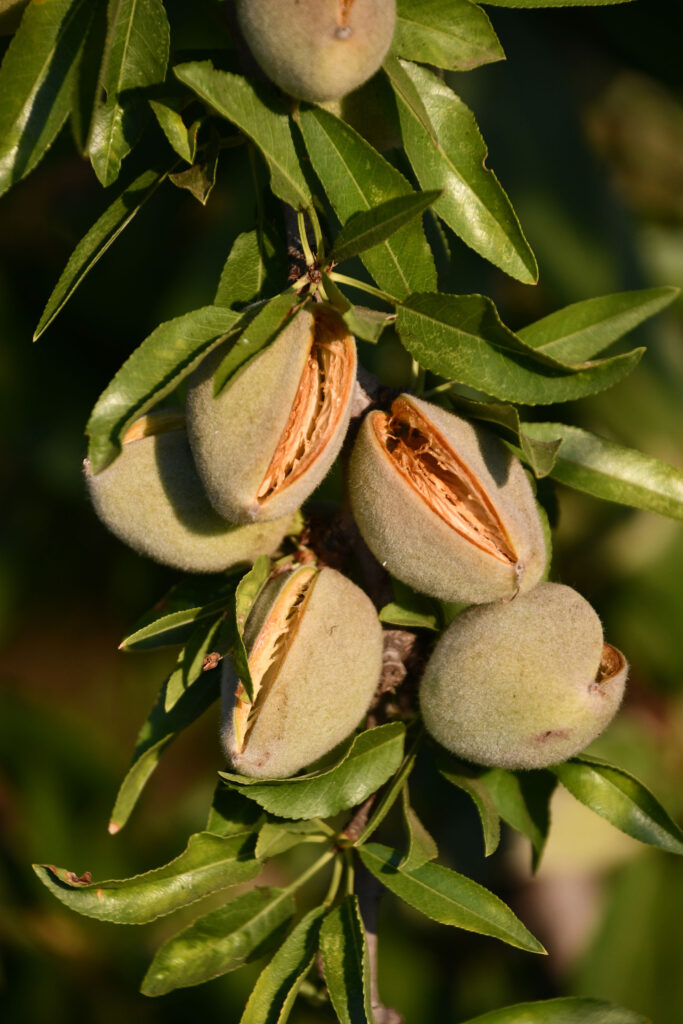
Franz Niederholzer, UCCE farm advisor for Colusa, Sutter and Yuba counties, recommended surveying orchards for mummies on or before January 15. Count the mummies on 20 representative trees and average the results. This should be done for each variety, regardless of shell thickness or seal, within the orchard.
If there are more than two mummies per tree, plan to mechanically shake or have a crew hand-poll the trees to remove them before bud swell. In the central to southern parts of the Central Valley, David Haviland, UCCE farm advisor in Kern County, recommends striving for fewer than one per tree.
But the increased cost and reduced availability of polling crews has made winter sanitation more challenging, he said. Afterward, the orchard floor should be disked or flail mowed by March 1 to destroy mummies on the ground.
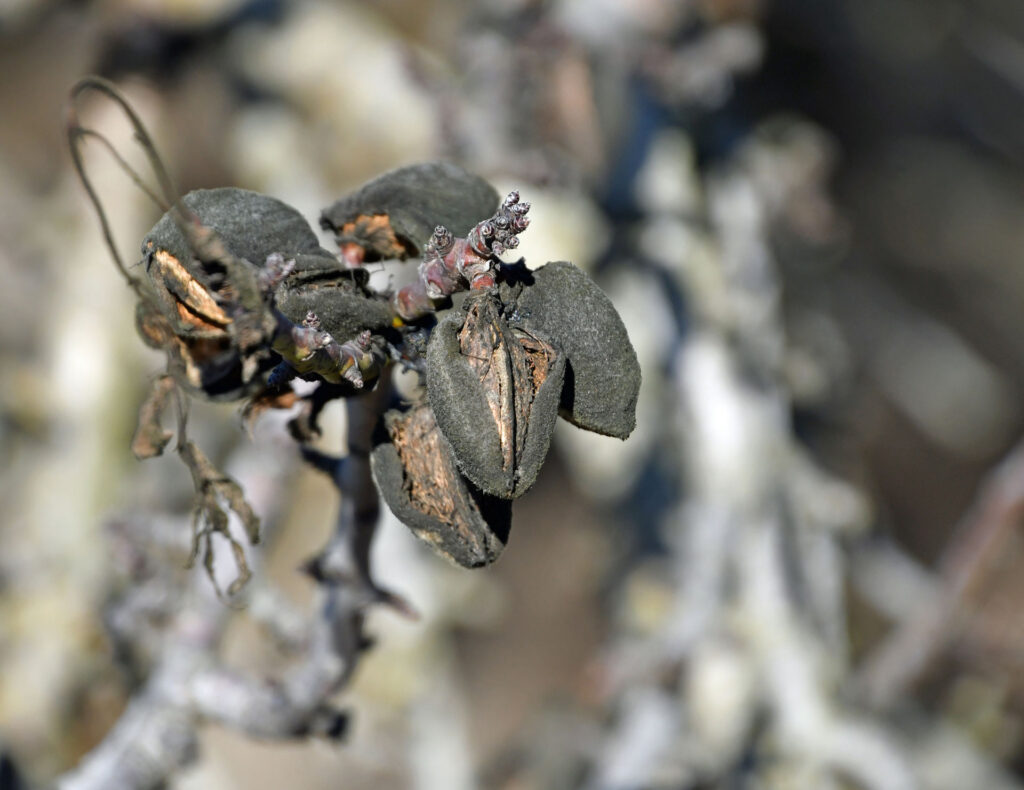
The optimum time for winter sanitation is after a heavy dew, fog or rain when the mummy nuts have absorbed some moisture. This makes them heavier and easier to shake and remove. The moisture also helps rot mummies in the trees as well as aids larval mortality on the orchard floor.
Unfortunately, Haviland said, the southern San Joaquin Valley never received heavy rains last winter.
“The ground remained bone dry all winter long,” he said. “Even if a mummy is below ground and it doesn’t get wet, a larva can emerge if it’s in the top few inches. Shallow-buried mummies never got wet.”
Rijal said sometimes growers and PCAs think that instead of shaking they can apply an insecticide to the mummies due to understandable reason, such as dry winters and labor shortages.
Regardless, he said, “We cannot beat the navel orangeworm if we only rely on insecticides, and we need to find ways to do the winter sanitation effectively. In fact, for winter sanitation, any time after the harvest through early February works. For example, we had some rain last week, and mummy sanitation can be done now if you can.”
Mating Disruption
In response to NOW control challenges, almond, pistachio and walnut growers representing more than 400,000 acres combined have successfully incorporated in-season mating disruption into their IPM programs, Haviland said.
Among adoptees is Niederholzer, who also is manager of the Nickels Soil Lab.
“Over the past two years at Nickels, we’ve had some of the best control measures of the last 10 years,” he said.
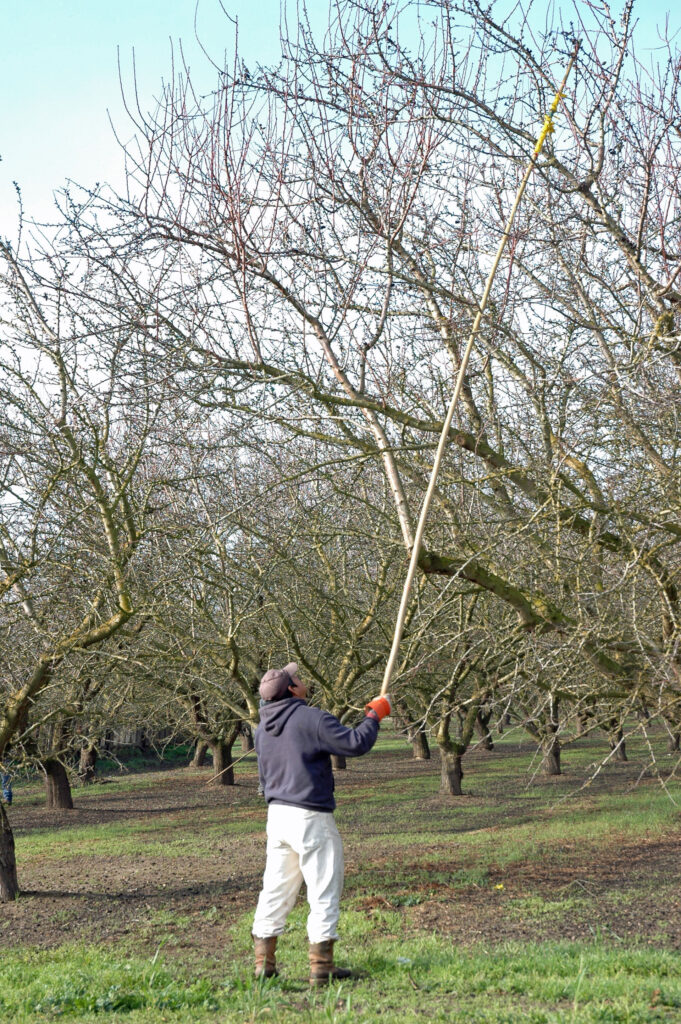
Hung in orchards in the spring, pheromone dispensers emit chemicals throughout the season that imitate those produced by female NOW. This confuses male moths, preventing them from finding females with which to mate. The system works best on large, contiguous blocks, but Haviland said even smaller-scale growers have seen benefits.
“We know it works on 40 acres in almonds,” he said. “We know it works better on 100 acres, and anything over 100 is just bonus.”
While not a silver bullet, mating disruption can help eliminate at least one in-season NOW treatment, according to UCCE.
Hull Split Sprays
Although insecticides are part of NOW IPM, they alone may only be 50% effective, and in many cases, less, Rijal said.
“Every time I do a trial with insecticides, I never reduce damage to zero even though I dip the nuts in a solution,” he said. In other words, insecticides at hull split are critical, but they cannot solve all of the problems and need to be combined with other control measures.
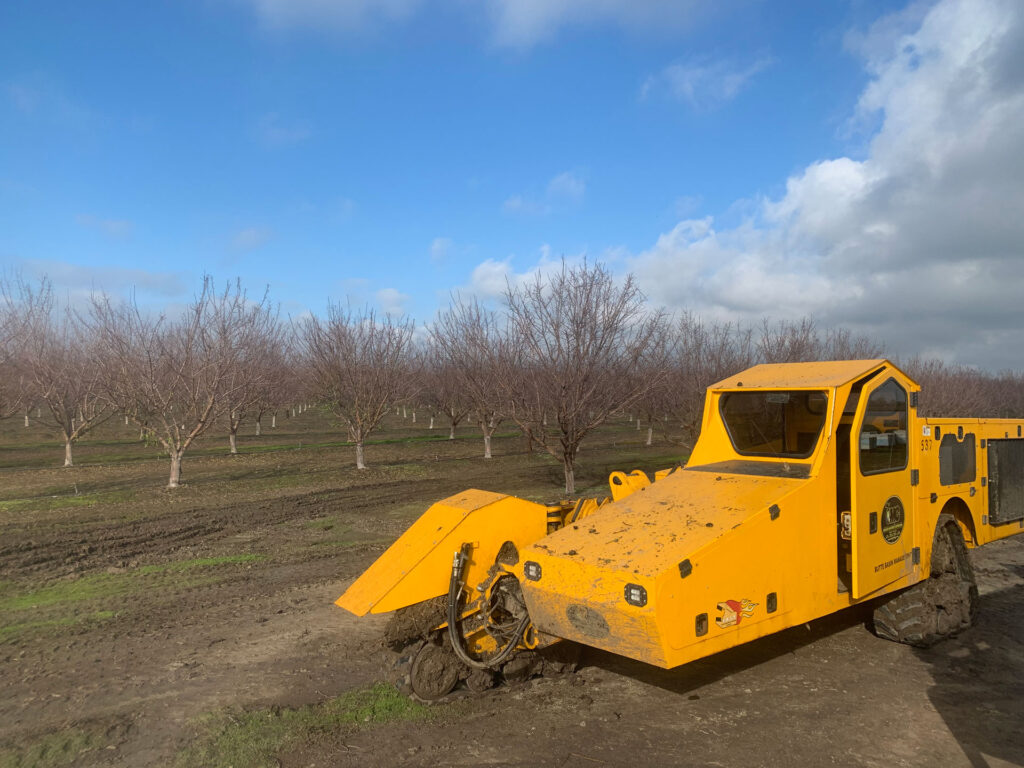
Insecticide choice also has grown more challenging as NOW has become less sensitive to the pyrethroid class of chemistries, Haviland said.
“Generally, pyrethroids are not working as well as they used to; there’s definitely pyrethroid resistance,” he said.
Application timing is critical as the hulls split and the nuts become susceptible to NOW egg laying.
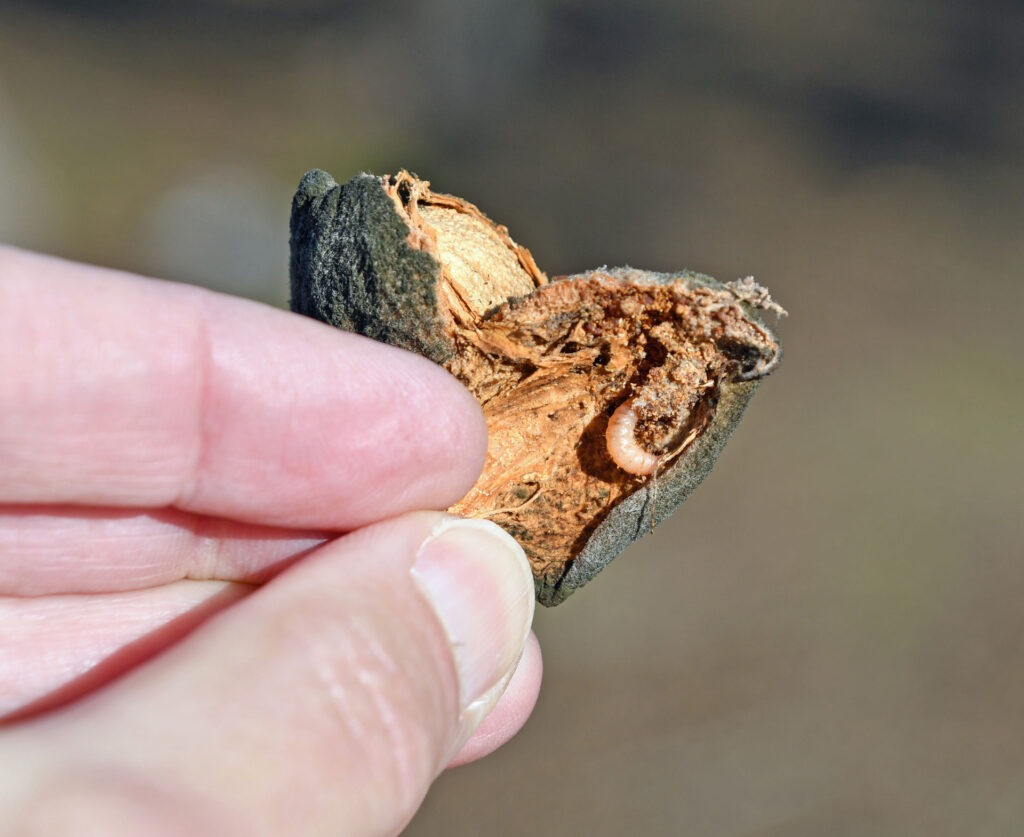
Machado said growers should time hull split sprays based on the crop stage, not the moth flight. Where they may get into trouble is not noticing the nuts in the tree tops that typically split before those at eye level.
“They need to be watching the tops of the trees, whether that’s with a pruning tower or long hook,” Machado said. “If you look where the nuts are in the canopy, they’re in the tops of the trees.”
“Timely” Harvest
While some talk about an early harvest to possibly avoid the third NOW flight, Machado prefers the term “timely harvest.”
“What’s the goal?” he asked. Is the crop going for meats or for in-shell, since the two end uses prompt different harvest timing.
Even then, it’s a balancing act. Ideally for the meat market, Extension recommends shaking when 100% of the nuts are one-half to two-thirds of the way split and the hull is still green, known as stage “d”. With some varieties, growers have found that harvesting at stage “c”, when the hull split is 0.25 to 0.5 inch, allows for a cleaner shake.
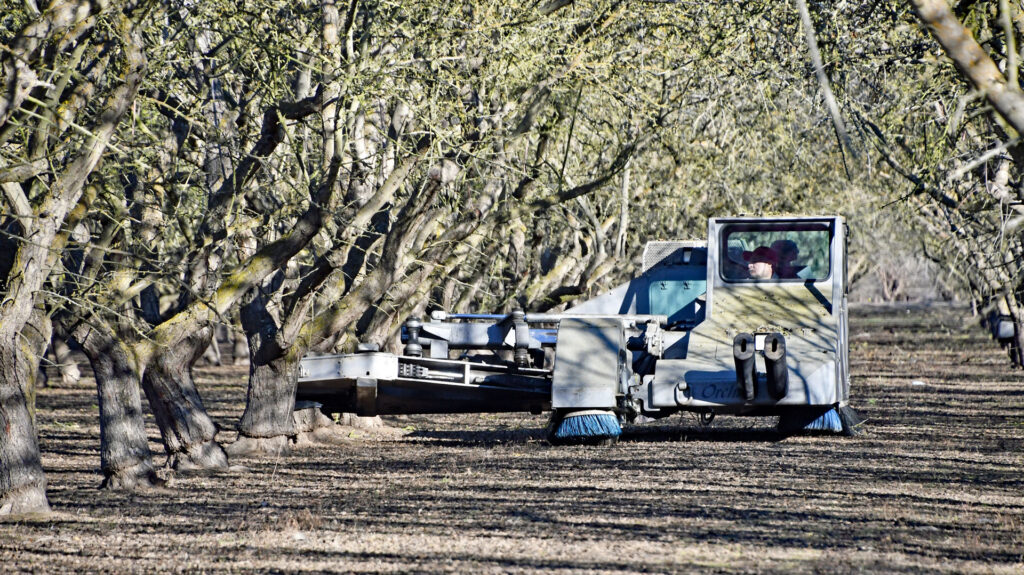
Harvest significantly earlier, and resulting higher moisture levels will mean the nuts have to sit on the ground longer to dry. This makes them potentially susceptible to additional ant damage, Machado said. Going too early also may mean the brown kernel skin hasn’t set adequately, and you get more “peelers”.
On the other hand, if you let the nuts dry for a prolonged period on the tree, you expose them to an increased egg laying potential from the third NOW flight. The hulls also cup and become tough, making them more difficult to remove.
For the in-shell market, Machado said growers should wait until the hulls butterfly before they harvest. Leaving the nuts on the tree longer also exposes them potentially to more NOW egg laying. If the orchard was managed with high fertility, toxins from hull rot also could build up with later harvest, creating more stick-tights.
To determine how well their NOW program worked during the season, Rijal said growers shouldn’t just rely on handlers’ grade sheets. In addition, they should collect field samples at harvest because up to half of damaged nuts are left in the orchard and aren’t reflected in the reports.
“Take multiple samples of 500 to 1,000 nuts representing the orchard and crack the nuts out,” he said. “It helps to know what’s going on and also look at the history of the orchard.”










